I used to be a park ranger with the National Park System in the United States and I still travel around the world to meet with other park rangers. The 9th World Ranger Congress (WRC) had me off to exotic Asia to the countries of Nepal and Bhutan. Both are fascinating countries. Here are some places to visit in Nepal and Bhutan.
[Editor: listen to Jeff talk about Joshua Tree National Park where Jeff was the chief park ranger on Amateur Traveler].
Tiger’s Nest View – Bhutan
Table of contents: ()
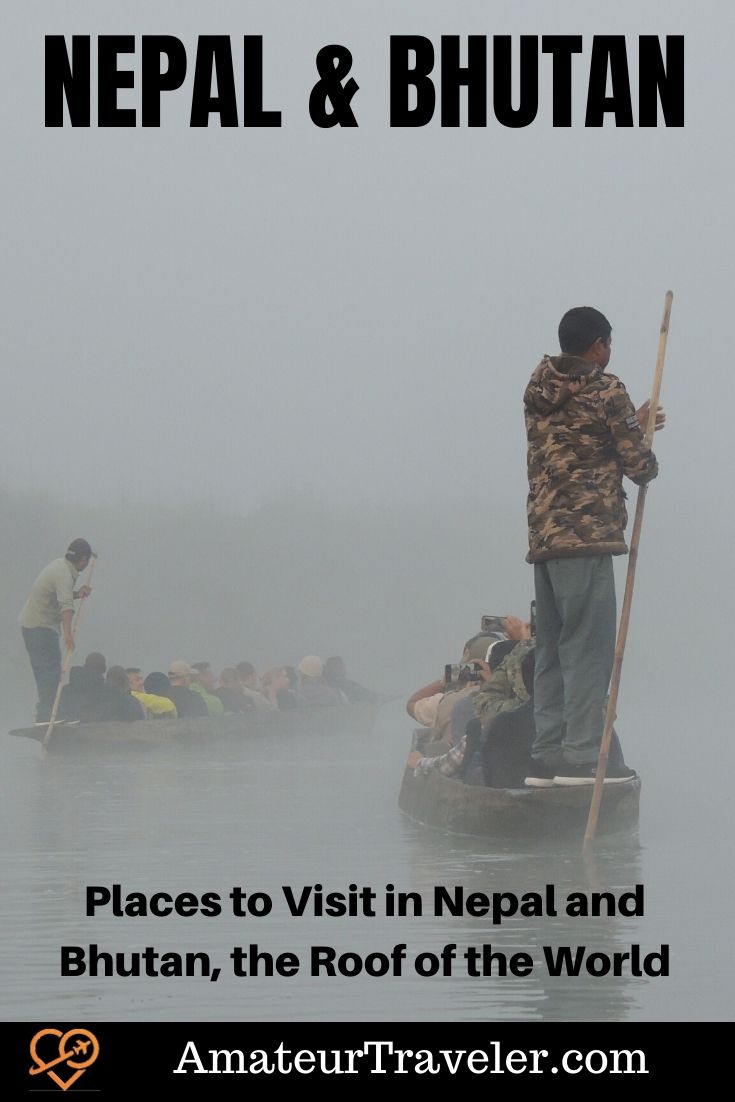
Nepal
Getting to Nepal
My trip to Nepal and Bhutan started with the flight to Kathmandu from San Francisco via China. It was 13 hours to Guangzhou (Canton), China, and then a 4-hour flight to Kathmandu.
There are great views of Everest and the Himalayas between Guangzhou and Kathmandu provided you get a window seat on the right side of the plane. Pilots flying into Kathmandu airport require a special training certificate due to the airport being on a Mesa in a valley at the foot of the Himalayan mountains.
It is a 13.45-hour time difference to California which wasn’t too bad maintaining contact with home. I have no idea about the 45 minutes! I’ve read it has to do with Nepal being 4 degrees of longitude off which they jokingly call “Nepal stretched time” and never makes them late by making them 15 minutes early to everything.
I was greeted at the airport with a Nepal ceremonial scarf (Khada) signifying compassion, not unlike the custom of being presented with a lei upon arrival in Hawaii. Namaste!
Facts about Nepal
Nepal is 90% Hindu and 10% Buddhist despite Buddha being born in Nepal. Nepal opened for tourism in 1951. They drive on the left side of the road. The unit of currency is the Nepal Rupee, about R111 to the US dollar (2019). The Thamel district of Kathmandu is a pedestrian-only back street tourist shopping district. Dinner can be had at the Thamel House Restaurant which specialized in Nepali and Newari foods. It’s the former 150-year-old wood residence of a Newar craftsman. I would recommend the Nepali Ghar Hotel as a place to stay.
Lukla Airport Nepal
Lukla, Nepal
I flew to Lukla (Tenzing Hillary Airport), Nepal, at 9,338-foot elevation. It is the “Roof of the World”, the gateway to Everest and Sagarmatha National Park. It is the most extreme airport in the world; coming in at treetop level, landing over a 2,000-foot abyss and one of the highest airports in the world built by Sir Edmund Hillary. Lukla has no cars, foot traffic only. This is a very busy airport with over 50 airplane arrivals and 50 helicopter flights a day. Planes and sightseeing helicopters are constantly landing and turning around in 15 minutes.
Lukla is a small village dependent on tourism. People from all over the world are here. This is the starting point for trekking to Everest Base Camp or climbing Everest. One-hour helicopter sightseeing flights to Kalapathar (above Everest Base Camp) are expensive unless you can share the cost. It was a beautiful day and I got to see Everest up close. Everest was declared the highest mountain in 1852. My helicopter reached 21,000 feet above sea level with an outside temperature of -9 degrees.
The afternoon left me time to trek out a couple of miles on the Everest base camp trail walking in the footsteps of Sir Edmund Hillary. I took a loop trail starting down a 1000 “step” trail to Chaurikharka and looping up to the Base Camp trail. The trail is very busy, a foot freeway, with trekkers, Sherpas, and mule or Zupki (ox) supply trains. I did well with the altitude but did have many rest stops when my heart started pounding too fast. What a great adventure.
I stayed overnight at the Himalaya Lodge owned by the town’s go-to resident, Dawa Tshering Sherpa. The only downside was no heat and it’s cold at this elevation. Apparently, none of the hotels have heat.
Kathmandu, Nepal
The next morning, I flew back to Kathmandu. While waiting in the Lukla airport, I thought I was in an emergency room. So many of the trekkers were coughing like they all had bronchitis. Speaking of breathing issues, Kathmandu has very poor air quality. Let this be a health warning to anyone with respiratory issues, you should probably avoid Nepal. It caused me problems.
Royal Narayanhiti Palace Museum
Back in Kathmandu, I visited the Royal Narayanhiti Palace Museum. It was the site of the massacre of the Nepal royal family in 2001. It houses the Crown Jewels and the usual palace rooms including the Throne Room. The current structure was built in 1963 but has been the site of the residence since 1846.
That night, I went to Bhojan Griha for a traditional Nepal dinner. I was entertained with traditional folk music and costumed dances of the Sherpas and Gherkas. The building itself was 160 years old and served as a royal palace for the priests.
I had a two-day tour of the Kathmandu Valley World Heritage Site. The site is composed of seven properties. Most of the properties were being restored after the 2015 7.8 earthquake.
- Buy Travel Insurance
- Get a universal plug adapter
- Search for Great Tours HERE
- Book Your Accommodation HERE
- Get an eSim to be able to use your smartphone abroad.
- Get a Car Rental
Hanuman-dharma Durbar Square
The first property I visited was Hanuman-dharma Durbar Square which contains an ancient wooden palace, Hanuman Statue (Red Monkey Hindu God), and various temples with intricate wood carvings all dating back to 1563. In addition, the House of Kumari is the home of a female child (4-year-old) known as the Living Goddess of Nepal. She presented herself to me from a balcony and I received her blessing.
The valley was divided between three grandchildren who were each given their own city to rule, Kathmandu, Patan, and Bhaktapur. Being siblings, they tried to outdo each other with their Palace Square or Durbar. This was the first. The second property is Swayambu Stupa where the Buddhist Saint Manjushree found a lotus flower in the center of a lake, drained the lake, and established Kathmandu.
Monkey Temple
A stupa is a Buddhist temple that has prayer wheels you walk left around the Stupa spinning and chanting “Om Mane Padme Hun” which means “hail to the jewel in the lotus.” It is also called the “Monkey Temple” due to all the Assamese monkeys on the grounds. You get a good view of the city of Kathmandu from here despite the polluted air.
The third property is a Buddha Stupa built in the fifth century and is one of the largest in Nepal. Here you will find a school of Thankas (tantric Buddhist paintings). They are intricate, detailed, vividly colored, beautiful, and painted with cat hairbrushes.
Pashupatinath Temple
The fourth property is Pashupatinath Temple dedicated to Shiva and built 500 years ago. This temple is the holiest Hindu temple in Nepal. The grounds along the sacred Bagmati River serve as a cremation site known as Arya Ghat. I encountered at least three cremations occurring and one body openly being prepared for cremation.
Patan Durbar Square
The fifth property is Patan Durbar Square, the second grandchild’s city. It is known as the city of “Beauty”. It’s known for its artists, craftsman, and metal workers. The Patan Museum (a temple) contains examples of metal sculptures. The square contains Buddhist monuments, Hindu temples, a Golden Temple, and guardian risqué statues. The royal palace has a royal bath with two snake statutes running along each side and 102 wooden hand carvings of Buddha’s hand and finger positions (AKA the original emojis). The palace and temple all have Golden Doorways.
Bhaktapur Durbar Square
The sixth property is Bhaktapur Durbar Square, the final grandchild’s city. It is known as the city of ” Devotees” and is the oldest of the three founded in 889 AD. It contains many of the same types of buildings as the other two with the exception of a five-tiered temple. One temple had a wooden gate that was exquisitely carved that the king had the craftsman’s hands cut off and buried nearby so he could not create another. The palace has 55 wooden windows. There is a working pottery kiln.
Changu Narayan Temple
The seventh and final property is Changu Narayan Temple, a Hindu temple dedicated to Vishnu, perched on a hill. It is one of Kathmandu’s oldest shrines. There was a religious ceremony occurring while I was there, and the ladies were all dressed in traditional attire. After visiting all these cultural properties, there sure is a lot of steps in this town. And the street merchants were like flies.
Shivapuri Nagarjun National Park
I took one morning and hiked in Shivapuri Nagarjun National Park. I took a hired 4WD jeep up a one-lane narrow dirt track to the top of Shivapuri Peak at 8963 feet and hiked straight down to 4429 feet. At the top, there are clear views of the Himalaya range. I saw a Barking Deer and Kalij Pheasant.
Interestingly, the ex-king’s palace home is inside the park and I had to go through four military checkpoints. The third checkpoint had a machine gun nest. Poachers don’t seem to be a problem at this park. Also, I learned Nepal doesn’t have park rangers, per se. The parks are patrolled by a special Army unit trained for park work.
Sarauha, Nepal
My next destination was Sarauha, Nepal. I got there by bus. It was unique to see working elephants transporting materials and the town rhino just walking down Main street on a daily basis.
I had three safaris around Chitwan National Park which is a World Heritage Site, Nepal’s first national park, and one of those “places to see before you die”.
Budhi Rapti River
The first was a Silk Cotton Tree dugout canoe. I floated about three miles down the Budhi Rapti River. We saw two Mugger crocodiles and a spotted deer.
Chitwan National Park’s Elephant Center
Afterward, I visited Chitwan National Park’s elephant center where elephants are rehabilitated, breed, and recover from injuries. The second safari was an elephant walk in the grasslands of Sapana with Lucky Kali, a rescued female. This is a more ethical tourism adventure than riding the elephants which is so widely advertised. Lucky had her own mahout (handler). I helped cut the grass with a sickle for Lucky’s lunch or Kuching.
Chitwan National Park Jeep Tour
My third and final safari was a jeep trip through Chitwan National Park. I took a tourist ferry dugout canoe across the East Rapti River to pick up my jeep. Again, after military checkpoints, I traveled about 24 miles through the forest and elephant grass. I saw wild boar, three Indian Rhinos, Gharial crocodile, spotted deer, and peacocks. The final stop was the park’s Gharial crocodile breeding center.
My return to Kathmandu was not uneventful. It’s a narrow two-lane valley/mountain road. There was an oil tanker truck that overturned and kept everyone parked for about 2.5 hours.
Nepalese Food
Nepalese food is spicy, and most people are vegetarians. However, I tried wild boar, water buffalo, Momo (beef dumplings), Sherpa Soup (vegetable), yak cheese, and Dal Bhat (lentils, rice, and veggies). For libation, I drank Raksi (a 60% distilled beverage which is much stronger than its hot water over millet version, Tongba), Nepal Ice lager beer, Gorkha beer, Himalaya Red beer, Chang (milky white authentic Sherpa beer), Sherpa Beer (ale, commercialized in name only), and milk tea.
Bhutan
Saying goodbye to Nepal, I flew into Paro, Bhutan, another top extreme airport. You fly up the valleys of the Himalayas banking left than right as you come in housetop level into the airport.
Facts about Bhutan
Bhutan is the “Land of the Thunder Dragon” (Druk Yul). The fabled land of “Shangri La”. It’s a strict Buddhist country. Here you experience their “gross national happiness” (which really wasn’t that apparent) and it is definitely the safest country on the planet.
Bhutan was first opened to foreigners in 1974. It is the size of New Hampshire and Vermont combined. The first vehicle arrived in 1962 with the first paved road. There is a twist in the road every 27 seconds and traffic lights are prohibited. They also drive on the left side of the road. Television came in 1999. Tobacco and plastic bags are illegal. Their currency is the Bhutan Ngultrum which runs about N70 per US dollar (2019). You get a better rate if you exchange US$100 bills than $20.
Nepal is cheap compared to Bhutan. The population is about 800,000 with 60% of that under 13 years of age. There are dogs everywhere and I only saw four cats in the entire country. English is understood fairly widely here as it is their mandatory second language. No one outside Bhutan speaks Bhutanese, so English appears to be the better choice when traveling internationally for Bhutanese.
Bhutan’s constitution mandates preserving 51% of its natural heritage in protected areas. Peak climbing is banned as the peaks are spiritual. Trekking on long-distance trails is allowed.
Paro, Bhutan
After leaving the airport, I checked into Kangku Resort and headed off to the National Museum. I was surprised to see the extent of wood carved deity and animal masks used in their cultural dance.
Below the museum is the Ta-Dzong, the watchtower over the Rinpung Dzong (monastery fortress) built in 1645 with more superb woodwork.
Taktsang Monastery (Tiger’s Nest)
My first full day was an adventure in endurance. I hiked 1,700 feet up a 6.5-mile trail in 7 hours to Taktsang Monastery also known as the Tiger’s Nest, located at 10,232 feet. The final section was 308 steps down and across a gorge. The approach is dangerous and slippery. The monastery clings to a sheer mountain ledge.
Taktsang Monastery was founded in 1692 by a Tibetan missionary venerated as the second Buddha. Legend says he landed on the spot (a cave) from Tibet astride a flying tiger, bringing Buddhism to Bhutan. He meditated here three years, three months, three days, and three hours. It is the cultural icon of Bhutan. It was fitting to be here on this day as it was a Buddhist holiday honoring Buddha ascending to Nirvana. I ascended to this Shangri-La!
Thimpu, Bhutan
My hotel in Thimpu, the capital of Bhutan, was Hotel Jumolhari. After breakfast, I went behind the hotel to the Changlimithang Archery Grounds to watch archery practice. Bhutanese are noted for their archery skills. Their practice range is 459 feet. I even tried my hand at it after lunch. I wasn’t that great.
Folk Heritage Museum
The first stop of the day was the Folk Heritage Museum which preserves one of the oldest homes in Thimpu. Across the street was the National Institute for Zorig Chusum which is a government-sponsored trade school where students learn to master the many cultural artworks of Bhutan, like woodworking, pottery, embroidery, and sketching.
Royal Textile Academy of Bhutan
The last stop before lunch was the Royal Textile Academy of Bhutan displaying beautiful ancient and modern textiles, like wall hangings and regional clothing.
Buddha Dordenma
After lunch, I went up the mountain to Buddha Dordenma, one of the largest sitting gilded-gold Buddha’s in the world. From there, you get magnificent views of the Thimpu Valley.
I had been feeling badly since I left Chitwan and my symptoms weren’t getting any better. I decided to check out their national health care system which is free to all including foreigners. I was diagnosed with Upper Respiratory Tract Infection in 1.5 hours. I received a chest x-Ray, EKG, and all my prescriptions. No cost to me. Wow, the US could really take a lesson here.
At the Bhutan General Post Office, Bhutan allows you to take any photo off your iPhone and turn it into a Bhutan official postage stamp. I had two stamps made showing me at Tiger’s Nest.
Punakha Valley
Back on the road for the last adventure, to Punakha Valley and the former capital of Bhutan. You drive over the 10,229-foot Dochula Pass which has a stupa with 108 miniature chortens (shrines).
Just over the pass is the Royal Botanical Park administered by the Bhutan National Park System and created in 2008. It’s known for having all 49 species of rhododendron found in Bhutan. A musk deer was wandering the grounds.
Chimi Lhakhang Temple
I checked into the Drubchhu Resort. After lunch, I visited the Chimi Lhakhang Temple. This is a temple to a demon deity, known as the divine madman, who had overzealous behavior with women. Phallic symbols in all shapes, sizes, color, and paintings can be found for sale and most homes and businesses are adorned with phallic symbols for good luck. Hence the temple is also known as the Fertility Temple. Childless couples come here to offer prayers and are usually blessed with children. There’s a testimonial photo book in the temple.
Khamsum Namgyal Chorten Temple
Up the valley is the three-story Khamsum Namgyal Chorten Temple built by the Queen. It’s a bit of a climb on a trail through the terraced rice fields after crossing the Mo Chuu River on a cable bridge. As with all Buddhist temples, it had striking paintings and god effigies.
Punakha Dzong
Back down, I had a picnic lunch at the confluence of the Mo Chuu (mother) and Phochu Chuu (father) rivers with Ruddy Shell ducks floating around. The confluence was strategically important. The Punakha Dzong (monastery fortress) was built to protect the country from invading Tibetans. It became the first capital of Bhutan and royal weddings and coronations are still held here.
Tamchog Lkakhang Temple
Driving back to Paro, I made a stop to view Tamchog Lkakhang Temple built by the “iron chain” monk, Thangtong Gyalpo. He built many temples and bridges made of iron chains to cross rivers. I stayed my last night at the Tashi Namgyal Resort.
Leaving Bhutan, Paro’s takeoff has the plane spiral up above the airport to gain altitude to get over the Himalayas. I saw the tallest mountain in Bhutan, Gangkhar Puensum (24,836 ft.). Bidding Bhutan goodbye, I can say I hope I don’t see rice or stairs for a few months upon my return!
Bhutan Food
Bhutan food is also very spicy and not a lot of variety, I tried their national dish Ema Datse (extremely spicy green chilies and cheese) and red or pink rice. They really love their chilies. It’s grown and dried all over the countryside. Drinks included Lassi (yogurt), Bhutan Peach Wine, buttered tea, Red Rice beer, and Druk Supreme beer.
Heading Home
Arriving back in Kathmandu, I prepared for the trip home. My final dinner was at a fantastic pizza place called Fire and Ice. By the crowds and the waitlist, it appears it wasn’t a secret.
A quick three-hour flight to Guangzhou, China, and I was looking forward to the McDonalds in the terminal. Sadly, a McDonalds without burgers and fries is like a bar without beer. Luckily, I got my meat fix at the nearby Burger King. Best burger ever (or at least since I left home). The next leg was 11 hours to San Francisco.
I was lucky I had no rain for the entire trip (November). It was amazing the amount of Indian Hindu tourists traveling in both countries. Travel statistics for this trip were: 17,696 air miles, 39 hours in the air, 541 miles by vehicle, 127 miles on foot, and 3.5 miles in a dugout canoe. Due to the exercise and illness, I gladly lost 12 pounds
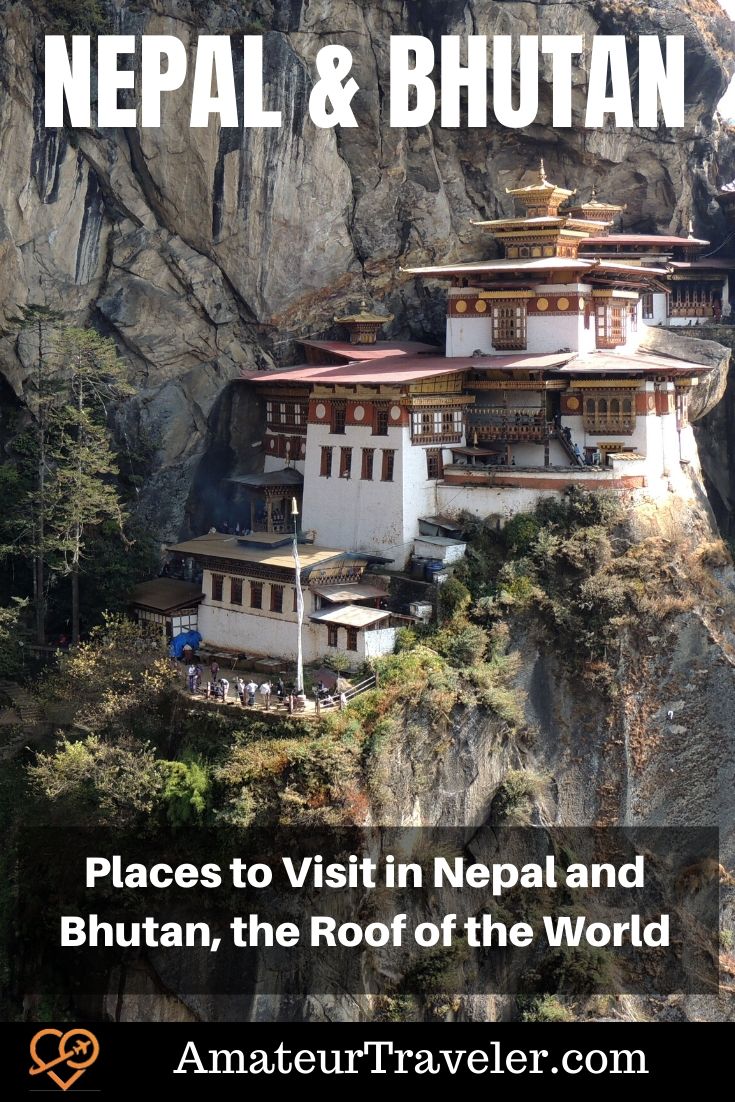
One Response to “Places to Visit in Nepal and Bhutan, the Roof of the World”
Leave a Reply
Tags: adventure travel, article, bhutan, kathmandu, nepal


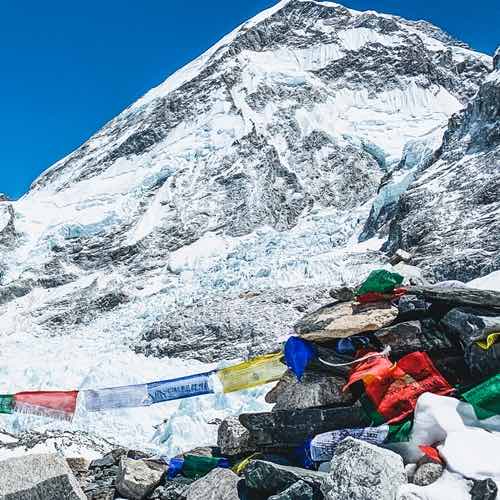 Everest Base Camp Trek: A Journey to the Roof of the World in Nepal
Everest Base Camp Trek: A Journey to the Roof of the World in Nepal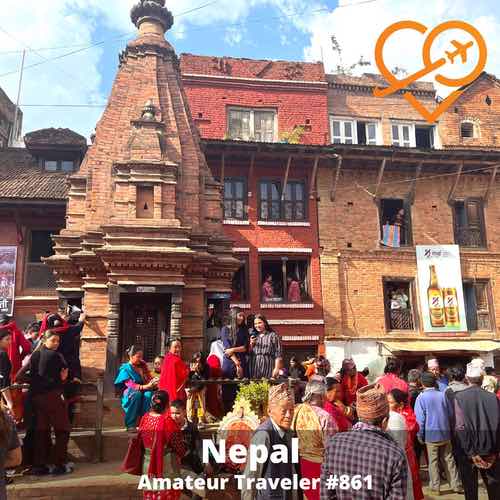 Travel to Nepal – Episode 861
Travel to Nepal – Episode 861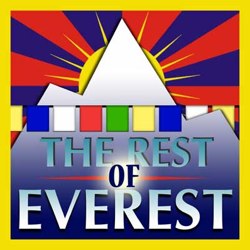 Travel to Nepal and Everest – Episode 205
Travel to Nepal and Everest – Episode 205 Best Trekking Places in Nepal: My Personal Experience with Additional Trekking Tips
Best Trekking Places in Nepal: My Personal Experience with Additional Trekking Tips

Marchus Shane
Says:March 7th, 2020 at 11:26 pm
Probably these were the places which I was looking for to travel during my summer holidays. I was just having the plans to travel Nepal only but I think I have changed my mind. I will surely keep these articles information on my trip.